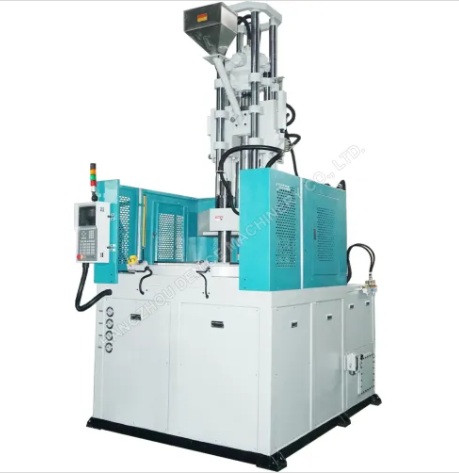Can Bakelite be injection molded?
Can Bakelite be injection molded?
Bakelite, one of the earliest synthetic polymers, revolutionized the world of materials when it was invented in the early 20th century. Developed by Belgian chemist Leo Baekeland in 1907, Bakelite offered a groundbreaking alternative to traditional materials like wood, ivory, and metal. Known for its exceptional heat resistance, electrical insulating properties, and mechanical strength, Bakelite quickly found its place in various industries, including electronics, automotive, and consumer goods. One of the most intriguing questions surrounding Bakelite is whether it can be injection molded, a manufacturing process that has become fundamental in producing modern plastic products. In this article, we will explore the characteristics of Bakelite and its compatibility with injection molding.
Understanding Bakelite
Bakelite is a type of thermosetting plastic, also known as a phenolic resin. Unlike thermoplastic materials that can be melted and reformed repeatedly, thermosetting plastics undergo a chemical transformation during the curing process. Bakelite is created by polymerizing phenol and formaldehyde under heat and pressure, resulting in a cross-linked three-dimensional network structure. This network is responsible for Bakelite's unique properties, such as high heat resistance and dimensional stability.
Injection Molding Process
Injection molding is a widely used manufacturing process in which molten plastic material is injected into a mold cavity, where it cools and solidifies to form the desired product. The process involves several key steps:
Material Preparation: Raw plastic material, typically in the form of pellets or granules, is loaded into a hopper and fed into a heated barrel.
Melting: The plastic material is heated within the barrel until it becomes molten and has a consistent viscosity.
Injection: The molten plastic is injected into a mold cavity under high pressure. The mold is typically designed to create the desired shape of the final product.
Cooling: After injection, the mold is rapidly cooled to solidify the plastic material.
Ejection: Once the plastic has cooled and solidified, the mold opens, and the finished product is ejected.
Injection molding offers several advantages, including high production efficiency, precision, and the ability to produce complex shapes. However, it is primarily associated with thermoplastic materials that can be melted and reprocessed.
Challenges of Injection Molding Bakelite
While Bakelite boasts impressive properties that made it a groundbreaking material in the early 20th century, it presents certain challenges when it comes to injection molding:
Curing Process: As a thermosetting plastic, Bakelite undergoes irreversible curing when subjected to heat and pressure during its initial manufacturing process. This curing process creates a three-dimensional network structure, making Bakelite resistant to further melting or softening. This fundamental characteristic makes it incompatible with the traditional injection molding process, which relies on melting and cooling the material to create parts.
High Melting Point: Bakelite has a high melting point, typically exceeding 300°C (572°F). This temperature is considerably higher than the typical operating range of most injection molding machines, which are designed for thermoplastic materials with lower melting points. Attempting to melt Bakelite at these temperatures could lead to degradation of the material, resulting in undesirable properties in the finished product.
Tooling and Equipment: Injection molding molds and equipment are designed to handle thermoplastic materials, which require different operating parameters and conditions. Molds for Bakelite injection would need to withstand higher temperatures and pressures, adding complexity and cost to the manufacturing process.
Alternatives to Injection Molding for Bakelite
Given the challenges associated with injection molding Bakelite, manufacturers have explored alternative processes to work with this historic material:
Compression Molding: Compression molding is a manufacturing process that is more compatible with thermosetting plastics like Bakelite. In this method, Bakelite powder or preforms are placed in a heated mold, and pressure is applied to compress and cure the material. While it is a slower process than injection molding, compression molding is a viable option for producing Bakelite components.
Transfer Molding: Transfer molding is another technique suitable for Bakelite. It involves heating the Bakelite material in a separate chamber and then transferring it into a mold cavity, where pressure is applied to facilitate curing. This method allows for greater control over the molding process and can produce parts with intricate details.
Conclusion
Bakelite, as a pioneering thermosetting plastic, has played a significant role in the history of materials science and engineering. While it cannot be injection molded due to its irreversible curing process and high melting point, it can be successfully processed using alternative methods like compression molding and transfer molding. These methods leverage Bakelite's unique properties, such as heat resistance and electrical insulating capabilities, to create a wide range of products.
Despite the emergence of newer plastic materials and molding technologies, Bakelite's legacy endures in various applications, from electrical components to vintage collectibles. Its historical significance and enduring relevance make it a captivating material to study and work with for those interested in the fascinating world of polymers and plastics. While it may not be the go-to choice for modern injection molding, Bakelite continues to hold its place as an iconic material in the ever-evolving landscape of materials science and engineering.





